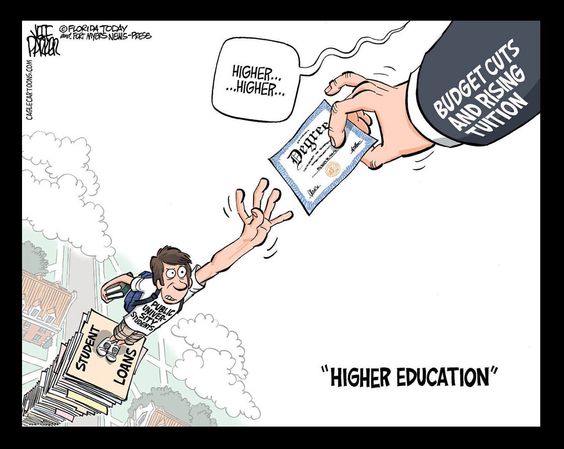
Development of higher education requires to meet high demands of society and to correspond to the global and international trends observed in many countries. Therefore, the Bologna process is considered as the examples of international cooperation, formation of education spaces, significance of public responsibility, and academic mobility. The adoption of Bologna process and its principles is a voluntary action (A Tempus Study, 2012). Kazakhstan became the first country in Central Asia which signed and ratified the Lisbon Convention and joined the Bologna Process.
Bologna Process requires from its members that they should focus on some actions: Comparable degrees of diplomas; adoption of a system essentially based on credit transfer system; promotion of academic mobility for faculty and students; cooperation with European countries in quality assurance; lifelong learning (Yergebekov, Temirbekova, 2012). Therefore, there is a question arises: Do we really meet the requirements of the Bologna process?
We have seen in practice that there are limits on the adoption of the Bologna process, in Kazakhstani higher education system. Though one of the core principles of the Bologna Process is referred to recognition of degrees, diplomas of Kazakhstani universities are mostly not recognized in many developed countries (Sarsembayeva, Kaigorodtsev, 2013). It can be related to lack of joint programs and degrees and these programs has not been provided by the legislation of Kazakhstan and it causes hindrance with implementation of the reform in general (A Tempus Study, 2012).
Implementation of the Bologna principles in Kazakhstan has been restrained by inefficient financing system. This can be explained again by centralized governance from the Ministry of Education and Science and funding of public universities only (OECD, 2007). Modernization of higher education among private universities, which comprised the majority, has been suppressed. Credit system also can be referred as another problem with the implementation of the Bologna Process. The сredit system was supposed to provide that each student freely chooses lessons he/she wants to attend and his/her teachers. But, due to the Soviet legacy of distribution of hours of teachers at the beginning of academic year, the number of courses and hours a teacher will give is known, and the students do not have any choice relatively their courses to take. So, electives eventually become required courses without much possibility to choose neither the course, nor the teacher (Yergebekov, Temirbekova, 2012).
Another problem with implementation of the Bologna Process was inability to ensure mobility of students and academic staff. In fact, there are some common obstacles for student mobility as “insufficient funding, insufficient language skills, low awareness of information, limited recognition of study abroad periods and of foreign qualifications; immigration and visa impediments” (European Higher Education Area, 2012). Yet, academic mobility, or more precisely, its inconsistent nature is stipulated by lack of flexibility of courses and credit transfer in terms of exchange programs, as well as cost of tuition fee and accommodation; besides there are no regulating mechanisms in Kazakhstan adopted that can facilitate student mobility. As for the mobility of academic staff, the program areas are restricted by some fields and language proficiency (OECD, 2007).
If there is a chance to do anything differently with the problems related to the adoption of the Bologna process, it can be stated as to increase public funding and establish mechanisms for involving international organizations and employers into this process (OECD, 2007). In addition, it is recommended to raise proficiency of the English language for academic staff in order to increase their mobility. In order to prepare a competitive student on the international level it is required to train academic staff and make their curricula more globally challenging.
As a final point, I would close by saying that the implementation of the Bologna Process is still under way and should be researched in order to face existing challenges and provide internationalization of higher education in Kazakhstan.
 Photo credit:
Photo credit:
http://www.zdnet.com/pictures/top-picks-in-college-memes/
https://www.pinterest.com/pin/234257618096218053/
References
A Tempus Study: State of Play of the Bologna Process in the Tempus Partner Countries, 2012. Retrieved from http://eacea.ec.europa.eu/tempus/tools/documents/study09_SoP_Bologna_0412_en_web.pdf
European Higher Education Area. (2012). Beyond the Bologna process: Creating and connecting national, regional and global higher education areas. Statement of the third Bologna policy forum (pp. 1 – 3). Bucharest.
OECD, (2007). Reviews of national policies for education: Higher education in Kazakhstan. MA, USA: OECD.
Sarsembayeva, G. J., Kaigorodtsev, A. A. (2013). Kazakhstan v Bolonskom protsesse. G-Global. Retrieved from http://www.group-global.org/ru/publication/view/1992
Tempus, (2012). Higher education in Kazakhstan. Retrieved from http://eacea.ec.europa.eu/tempus../participating_countries/overview/Kazakhstan.pdf
The European Higher Education Area in 2012: Bologna Process Implementation Report. Retrieved from http://www.ond.vlaanderen.be/hogeronderwijs/bologna/links/documents/Kazakhstan_national_report_2010.pdf
Yergebekov, M., Temirbekova, Z. (2012). The Bologna Process and problems in higher education system of Kazakhstan. Procedia: Social and Behavioral Sciences, 47, 1473 – 1478. doi: 10.1016/j.sbspro.2012.06.845










